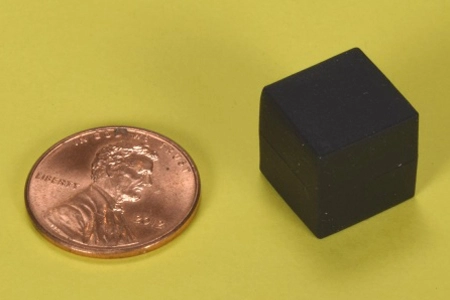The sintering of neodymium pot magnets refers to the craft to heat the green body below the melting point of the powder matrix to further improve the performance and usability of the magnet, to improve the contact properties between the powders, and to increase the strength so that the magnet has high-performance microstructure characteristics. This process maintains a certain temperature and keeps for some time.
Sintering is an extremely important process in sintering neodymium pot magnets, and all manufacturers and researchers attach great importance to it.
The relative density of the NdFeB powder compact is generally 50% to 70%, and the porosity is generally 30% to 50%. The bonding between the neodymium pot magnet particles is all mechanical bonding, and the bonding strength is extremely low.
If the molding pressure is very high, some of the particles that have been in contact with each other have already produced elastic or plastic deformation, at this time the sample is easier to crack, and its microstructure is not enough to produce high magnetic properties.
First of all, the gas (including water vapor) adsorbed on the surface of the powder particles is eliminated. The organic matter (such as oil that may be stained in the isostatic pressure or the added antioxidants and lubricants, etc.) evaporates and volatilizes. The stress is relieved, and the surface of the powder particles reduces oxides. Recovery and recrystallization of deformed powder particles happen.
Secondly, atoms diffuse, materials migrate, and the contact between particles is changed from mechanical contact to physical-chemical contact. Neodymium pot magnets form a combination of metal bonds and covalent bonds.
Finally, the contact surface between the powders expands and a sintered neck appears, which is followed by the growth of the sintered neck, the increase in density, and the growth of crystal grains.
The powder green body has a large porosity and a large surface area, so the surface energy is also large. And it also has lattice distortion energy, so that the powder green body is in a high-energy state as a whole.
From an energy point of view, this is unstable. Neodymium pot magnets have the tendency and driving force to spontaneously sinter and bond into a dense body.
Therefore, under certain temperature conditions, that is, when the kinetics permits, the contact between the powder particles will be from points to surface to reduce the surface area and surface energy.
As the contact surface between the particles expands, the green body begins to shrink and densify, and finally becomes a sintered body. In short, the sintering of neodymium pot magnets is the process of changing the powder combination from a green body to a rough body.
Sintering is divided into liquid phase sintering and solid-phase sintering. These two sintering methods have many things in common.
Ningbo Beilun Meank Magnetics Co., ltd. has been engaged in the production of neodymium pot magnets for more than 10 years. After years of industry knowledge accumulation and experience exploration, the company has dozens of advanced magnetic components related to parts processing equipment and machined magnet components. From the original traditional steel cup (tank) magnet, it has expanded to rubber and plastic coated holding magnets and installing magnets.
We sincerely look forward to cooperating with customers all over the world to develop magnetic components and equipment.




